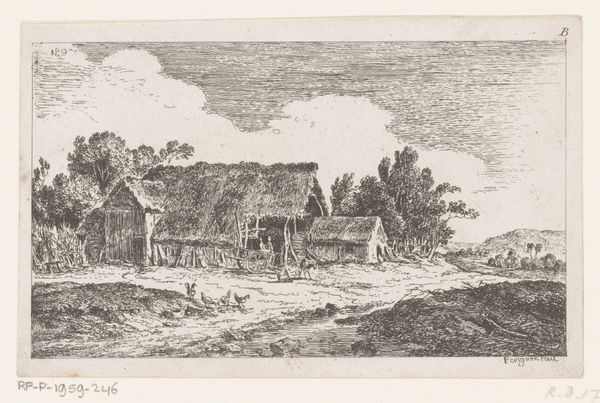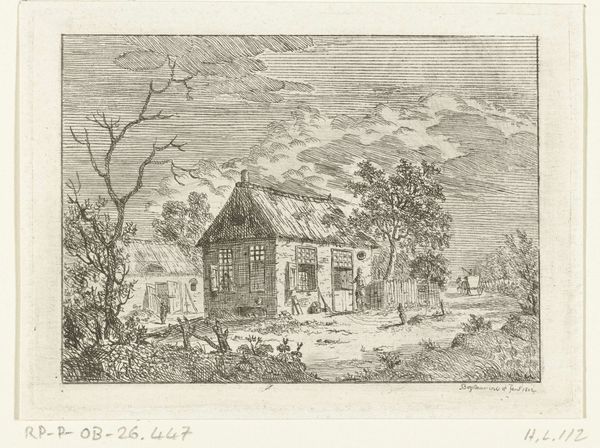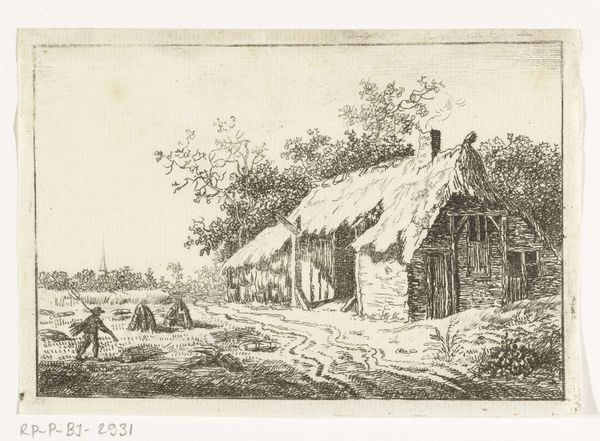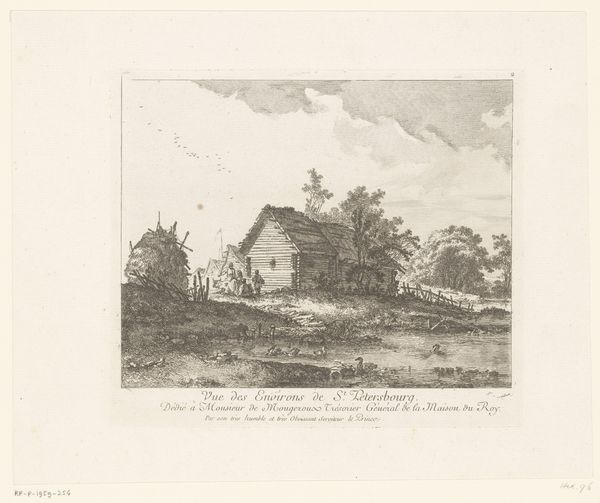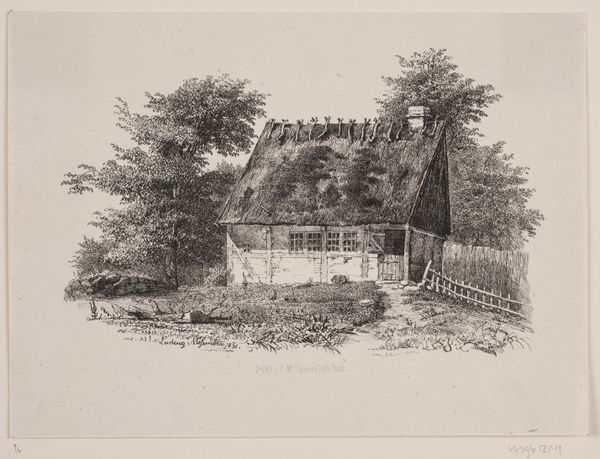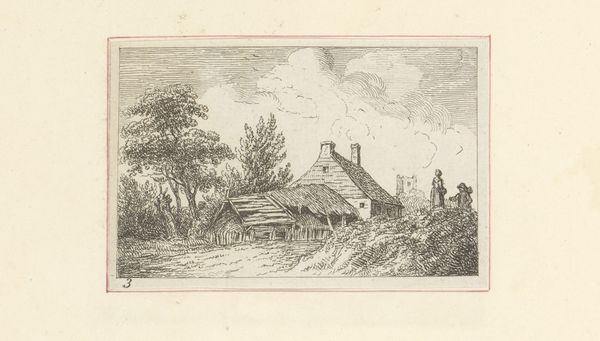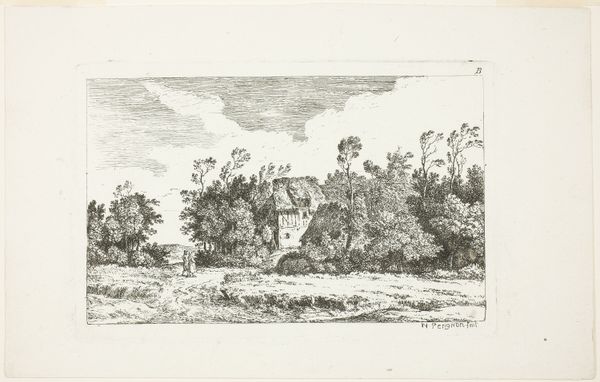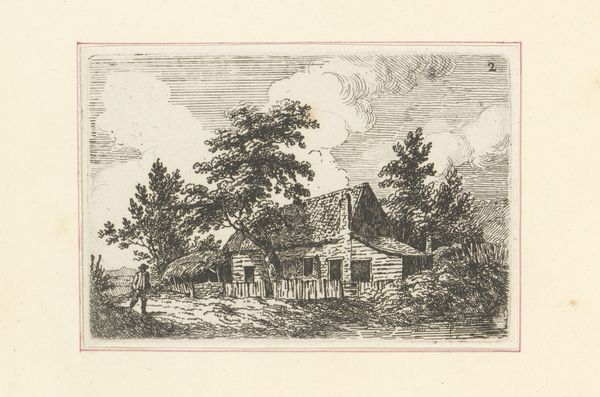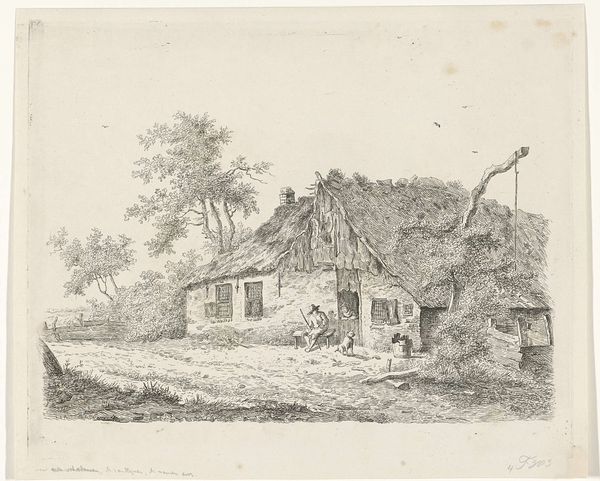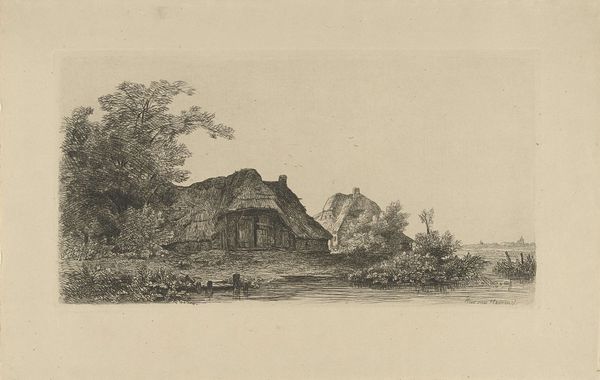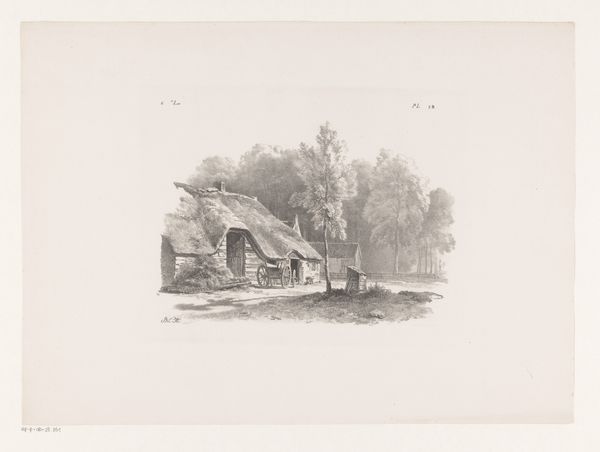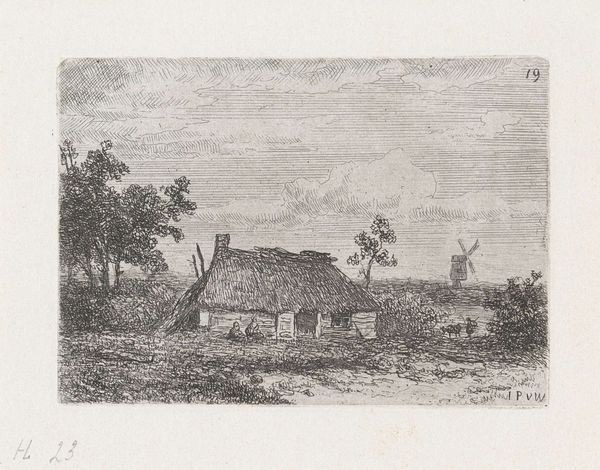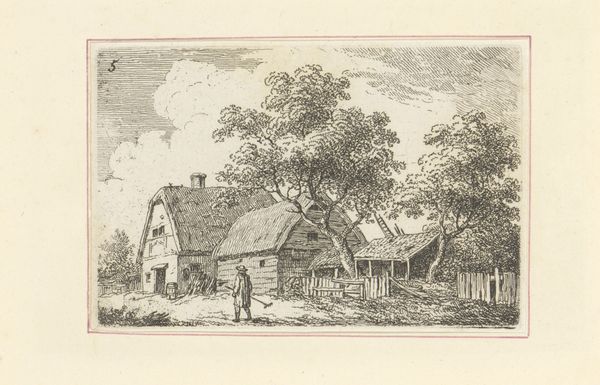
drawing, paper, ink
#
drawing
#
pen sketch
#
landscape
#
paper
#
ink
#
romanticism
#
genre-painting
Dimensions: height 90 mm, width 155 mm
Copyright: Rijks Museum: Open Domain
Albertus Brondgeest created this etching of a waterscape, sometime between the late 18th and mid-19th century. Brondgeest would have started by covering a metal plate with a waxy, acid-resistant ground. Using a needle, he then scratched away the ground to expose the metal. The plate was immersed in acid, which bit into the exposed lines, creating grooves. Ink was then applied to the plate, filling these grooves, and the surface was wiped clean. Finally, paper was pressed against the plate, transferring the ink and creating the print. The etching process allowed Brondgeest to capture the textures of the dilapidated watermill. Look at the way he renders the rough wood, crumbling stone, and overgrown vegetation. The layering of lines creates a sense of depth and atmosphere, a stark contrast to the labor intensive processes required to maintain the mill. This print offers insight into the relationship between the built environment, labor, and the natural world. It challenges the traditional hierarchy between fine art and craft by highlighting the skill and technical knowledge involved in printmaking.
Comments
No comments
Be the first to comment and join the conversation on the ultimate creative platform.
